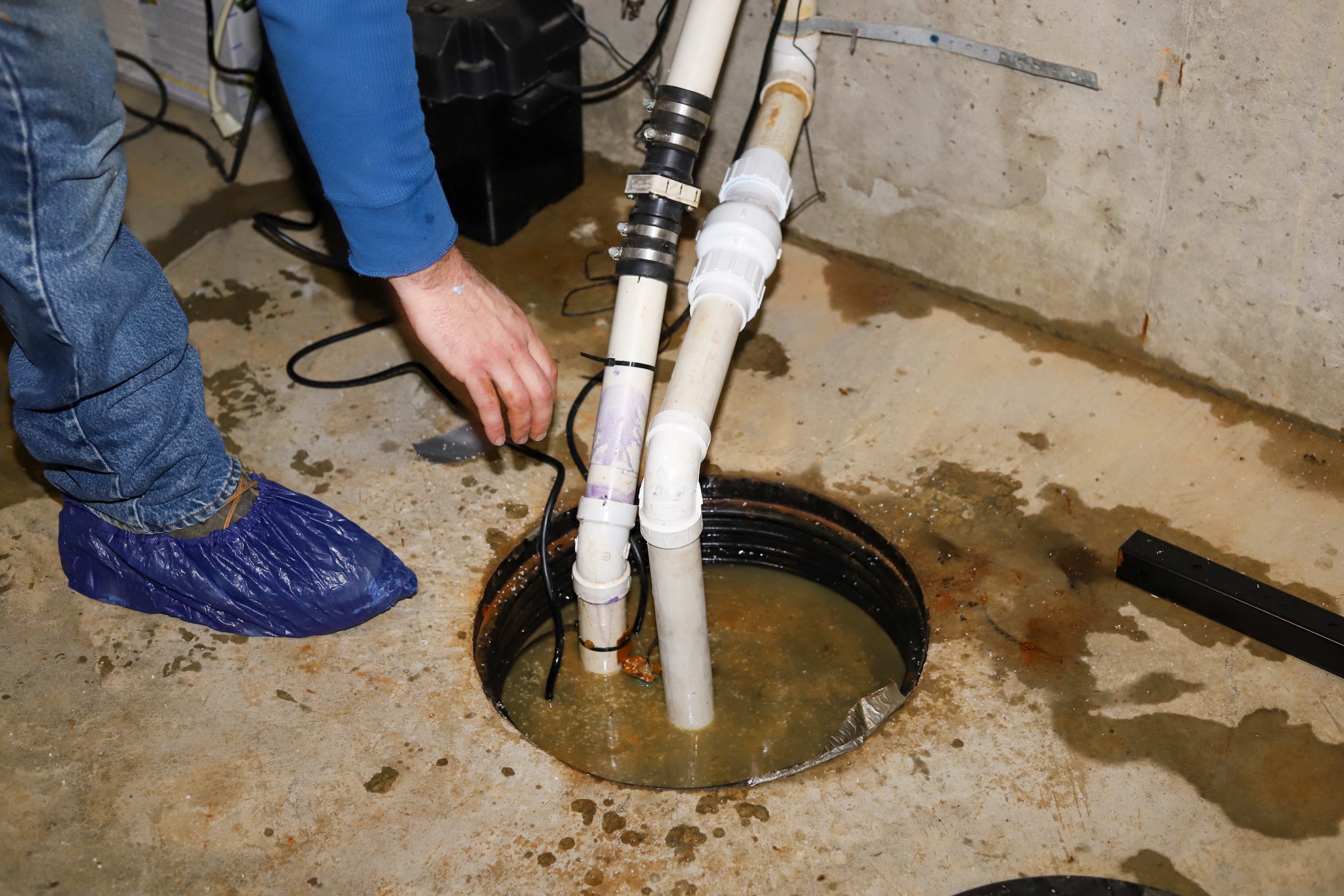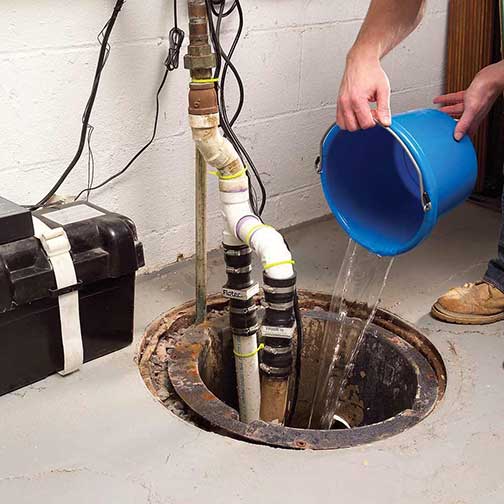Straightforward Methods for Taking Care of a Sump Pump
Straightforward Methods for Taking Care of a Sump Pump
Blog Article
What are your thoughts and feelings about Steps to Cleaning Your Sump Pump Properly?

Sump pumps are vital elements in several homes, particularly in areas prone to flooding or extreme wetness. They help prevent water damages by efficiently eliminating excess water from basements or crawl spaces. However, like any other device, sump pumps require routine upkeep to guarantee they work properly when needed the most. Cleaning your sump pump is a crucial part of its upkeep, and comprehending exactly how to do it properly can save you from pricey repair work and potential calamities.
Introduction
Preserving a tidy sump pump is important for its correct functioning and long life. Ignoring this important task can cause obstructions, breakdowns, and eventually, water damage to your residential property. As a result, discovering how to clean a sump pump is critical for home owners who rely on these tools to keep their cellars completely dry and protected.
Indicators of a Dirty Sump Pump
Knowing when your sump pump needs cleansing is vital for preventing possible breakdowns. Some common signs that show a dirty sump pump include odd sounds throughout operation, minimized water circulation, and noticeable particles in the pit. If you see any one of these signs, it's important to clean your sump pump promptly to prevent any more problems.
Planning for Cleansing
Prior to you begin cleaning your sump pump, it's essential to take some security preventative measures. Start by shutting off the power to the pump to prevent any electrical mishaps. In addition, use appropriate protective gear, such as handwear covers and safety glasses, to safeguard on your own from dust, debris, and potential pathogens.
Comprehending the Sump Pump
Before diving right into the cleaning procedure, it's vital to have a fundamental understanding of how a sump pump functions. Normally set up in a pit or container below the cellar floor, a sump pump contains a number of crucial parts, including a pump, a float button, and a discharge pipe. When water collects in the pit, the float button turns on the pump, which then pumps the water out through the discharge pipe, away from the building's foundation.
Step-by-step Overview to Cleansing a Sump Pump
Shutting Off the Power
Begin by separating the power supply to the sump pump to prevent any type of mishaps while cleansing.
Looking For Correct Functioning
Before reinstalling the pump, perform a quick test to guarantee that the float switch activates the pump correctly. Pour some water right into the sump pit and observe the pump's operation. If whatever is operating appropriately, you can rebuild the pump and reconnect the power supply.
Removing Particles and Dirt
Use a bucket or a scoop to eliminate any noticeable debris, dirt, or sediment from the sump pit. Dispose of the debris correctly to stop it from obstructing the pump or the discharge pipeline.
Cleaning the Pump and Float Switch Over
Once the pit is clear of debris, thoroughly get rid of the pump from the pit. Examine the pump and the float switch for any type of signs of damages or wear. Use a soft brush or fabric to cleanse the surfaces and eliminate any gathered gunk.
Purging the System
After cleansing the pump and float switch, flush the sump pit with tidy water to remove any type of staying dust or debris. This will certainly help guarantee that the pump runs smoothly and effectively.
Upkeep Tips to Maintain Your Sump Pump Clean
Along with regular cleansing, there are several maintenance tips you can follow to maintain your sump pump in optimum problem:
Verdict
Cleaning your sump pump is a critical facet of its upkeep and makes certain that it runs successfully when you require it one of the most. By following the actions detailed in this guide and incorporating regular upkeep into your routine, you can prolong the life expectancy of your sump pump and shield your home from water damage.
6 STEPS ON HOW TO CLEAN A SUMP PUMP PROPERLY
UNDERSTANDING SUMP PUMPS
Your sump pump plays a crucial role in protecting your home by managing and removing excess water. It primarily functions as a “shield”, guarding your basement against the damaging effects of water accumulation. The pump is housed in a sump pit in the lowest part of your basement, and its job is to pump out any water that collects there.
During heavy rainfalls or when snow melts rapidly, water can infiltrate your basement, posing potential risks like flooding, structural damage, and harmful mold growth. Here, the sump pump springs into action, pumping out the intruding water and directing it away from your home.
SAFETY FIRST
Before cleaning, remember to prioritize safety. Disconnect the sump pump from the power source to prevent any accidental electric shocks. Also, wear sturdy gloves to protect your hands from any sharp or dirty components within the pump.
REMOVE THE SUMP PUMP
After ensuring your safety, the next step is to remove the sump pump from its pit. Doing this might require careful maneuvering as you don’t want to damage any pump components. Once removed, clean the sump pit to remove any accumulated debris or sludge.
INSPECT THE PUMP
Inspect the pump for any visible signs of wear or damage. Check the power cord, float switch, and impeller housing. If any components look worn out or damaged, consider replacing them to ensure optimal performance.
CLEAN THE PUMP
Thoroughly clean the pump with warm, soapy water. Make sure to rid it of any dirt, gravel, or other debris that might impede its performance. You can use a toothbrush to clean the small, hard-to-reach parts of the pump.
REINSTALL THE SUMP PUMP
Reinstall the pump into the sump pit Make sure it’s positioned correctly to remove the water effectively Once it’s back in place, reconnect it to the power source TEST THE PUMP
Finally, pour some water into the pit to ensure the pump works correctly. It should start automatically and begin pumping out the water; if it doesn’t, check the power source and the positioning of the pump.
Remember, while cleaning your sump pump is an essential part of home maintenance, hiring a professional plumber for a thorough inspection and cleaning at least once a year is also important. This will ensure that your pump is in optimal condition, ready to protect your home from potential water damage.
BEST PRACTICES FOR CLEANING SUMP PUMP DISCHARGE PIPES
Regular Inspection: Regularly inspect your discharge pipes, especially during heavy rainfall or snowmelt periods. Look for any signs of blockage or damage. Early detection of problems can prevent serious issues down the line. Periodic Cleaning: Over time, sediment and debris can accumulate in the discharge pipes, impeding the flow of water. Regular cleaning helps keep the pipes clear and functioning efficiently. You can use a high-pressure water jet to effectively clean the pipes. Insulation During Winter: In colder climates, discharge pipes can freeze, blocking the outflow of water. Protect your discharge pipes from freezing temperatures by insulating them with foam pipe insulation. This will ensure the sump pump can continue to discharge water even in freezing conditions. Proper Positioning: The discharge pipe should be positioned to direct water away from your home’s foundation. Improper positioning can lead to water seeping back into the basement. Ensure the pipe is long enough and angled correctly. Installation of a Check Valve: A check valve prevents water from flowing back into your sump pit after the pump has pushed it out. Installing a check valve helps maintain the efficiency of your sump pump and reduces the risk of flooding. Minimize Pipe Turns: Every curve or turn in the discharge pipe can decrease the efficiency of water flow. By minimizing turns and bends in your discharge pipe, you can increase the efficiency of your sump pump. https://www.fullspeedplumbing.com/how-to-clean-a-sump-pump-properly9999/

I was shown that article about Keep Your Sump Pump Clean, It'll Keep You Dry through a friend on our other domain. In case you appreciated our page kindly make sure you remember to pass it around. Thanks a bunch for your time. Return soon.
Click Here Report this page